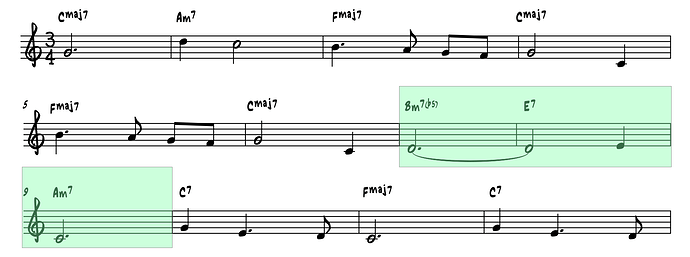Hi Guillaume,
The core premise is that scales are linear, and triads are non-linear.
When we see the chord Cmaj7, one option is to play the C major scale.
However, this approach could make us think in a ‘linear fashion’ and the temptation is to just run up and down the scale which can sometimes sound robotic and not very creative.
However, if we take a triad from the C Major Scale, let’s take the G major triad for example, it contains the 5th, 7th, and 9th of C major.
Using the 3 notes of that G triad, we can create melodic ideas and phrases which are non-linear, ie, not just series of half and whole steps like the C Major Scale. Instead, the triad and its inversions contains 3rd and 4th intervals which can be used to create more interesting melodic contours in our improvisation.
Of course we could combine the G Triad with the essential chord tones of C Major (3rd and 7th) and perhaps also some scalar material, but the idea is that we are using the G triad as the basis of our melodic creativity, instead of just using the C Major scale as the basis of our melodic creativity.
A specific triad can also bring out specific colours over a chord. For example, if we play a D Major Triad over a Cmaj7 chord, we are outlining the chord tones 9, #11, and 13, which gives us Cmaj13#11. But all we are thinking is Dmaj/C. It’s effectively a shortcut.
Tuomo made a similar lesson on triad pairs here:
Check that lesson out, and any further questions let us know 
 , as Steve Job said “you can’t connect the dots looking forward, you can only connect them looking backwards”
, as Steve Job said “you can’t connect the dots looking forward, you can only connect them looking backwards” 




